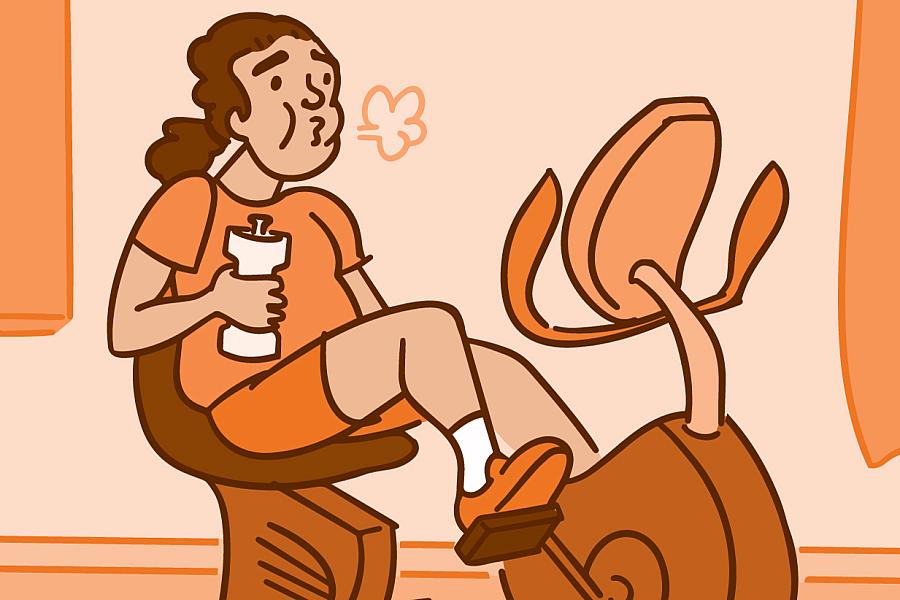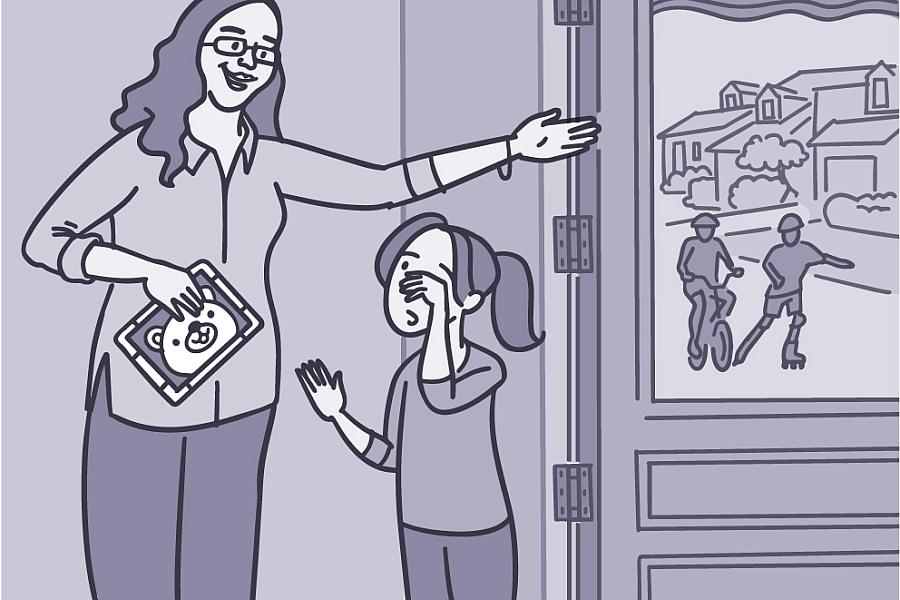Breathe Easier
Dealing with Bad Air Quality

Even though you can’t see it, the air you breathe can affect your health. Polluted air can cause difficulty breathing, flare-ups of allergy or A chronic lung disease that causes wheezing, coughing, chest tightness and trouble breathing. asthma, and other lung problems. Long-term exposure to air pollution can raise the risk of other diseases, including heart disease and cancer.
Some people think of air pollution as something that’s found mainly outside. They may picture cars idling or power plants with smoke stacks. But air pollution can also occur inside—in homes, offices, or even schools.
Whether outdoors or indoors, the effects of air pollution are most obvious for those who already have difficulty breathing. “All people are likely susceptible to the adverse effects of air pollution. But people who have chronic lung diseases such as asthma are more susceptible,” explains Dr. Nadia Hansel, who studies lung problems at Johns Hopkins University.
NIH researchers are working to understand and reduce the impact that air pollution—both outdoors and indoors—has on health.
What’s Outside
Several different types of pollutants can affect your health. When the weather is warm, an invisible gas called ozone can make it harder for some people to breathe. This gas is created when sunlight triggers a chemical reaction between oxygen and certain pollutants from cars, factories, and other sources.
Ozone can irritate the lining of your airways and lungs. People with asthma and other lung conditions are more likely to feel its effects.
“When people with poorly controlled asthma are exposed to low levels of ozone, the amount of Swelling, redness, or irritation caused by the body’s protective response to injury or infection. inflammation in the lungs goes way up,” explains Dr. Daryl Zeldin, a lung and environmental health science expert at NIH. “As a result, air passages narrow, which makes it much harder to breathe.”
Another type of outdoor pollutant that affects health is particulates. These are fine and coarse particles that are released when fuel is burned. They can come from things like cars, power plants, and wildfires. Research has linked particulates to short- and long-term lung problems.
To track these and other harmful pollutants, air quality monitors have been set up at over 1,000 locations across the country. The U.S. Environmental Protection Agency uses these monitors to produce the Air Quality Index (AQI). The index can be found online at www.airnow.gov.
People who are sensitive to outdoor pollution may want to use the AQI to track when levels are high. This information can help you make choices about when to do outdoor activities.
Improving Air Indoors
Indoor air pollution can be harmful, too. It can come from many sources. Secondhand tobacco smoke contains tiny particles that can hurt your lungs. Gas stoves and appliances can create harmful gases.
Pets and pests (such as mice and cockroaches) can shed substances, called allergens, that cause allergies. Mold and dust mites also produce allergens. Even furniture and cleaning products can release harmful compounds into the air.
In recent years, researchers have learned a lot about how exposure to indoor pollutants contribute to disease. “Studies are now asking: What do we do about it? What sorts of things can help reduce some of these exposures?” Zeldin says.
Several NIH-funded researchers are looking at ways to reduce harm from indoor air pollution. Hansel studies the use of air cleaners (also called air purifiers) to improve the air quality for older adults with chronic obstructive pulmonary disease (COPD). This condition makes it hard to breathe and puts people at increased risk of dangerous lung infections, such as pneumonia.
“Studies have shown that high pollutant levels inside the home can make breathing harder for people with COPD,” Hansel says.
Hansel’s team is now testing whether using air cleaners with special filters in the home can decrease COPD symptoms. The filters they’re testing remove both particulates and nitrogen dioxide, a gas pollutant produced by cooking.
The researchers will compare COPD symptoms in people who use the filters with those who don’t. They hope the use of the filters will also reduce hospital visits.
Research has shown that improving indoor air quality in the home can improve the health of kids with lung conditions, explains Dr. Wanda Phipatanakul, a children’s health expert at Boston Children’s Hospital.
But while air quality in the home matters, children can spend more than eight hours a day indoors at school. Improving air quality in schools has the potential to improve the health of many children at once, Phipatanakul adds.
“Home-based interventions help individual families, but targeting schools could help all the kids that are there, and has much more potential for impact,” she says.
Phipatanakul is running an NIH-funded study in about 40 schools. The intervention includes air cleaners in classrooms to remove particles and special pest control strategies to reduce allergens. The researchers are tracking children with asthma at the schools over the school year to see if the intervention improves their symptoms.
Research has shown that, in addition to improving health, improving indoor air quality can also boost how well kids do in school. “Kids who come to school and aren’t as sick are going to do better. So that’s kind of the overall goal,” Phipatanakul says.
Inside Out
One good thing about indoor air pollution is that many causes can be removed or changed. “It’s difficult to change the outdoor environment,” Phipatanakul says, “but indoors is more contained.”
A simple tool for many homes is making sure inside air has a chance to escape. “Ventilating your house, such as opening windows, can actually lower the air pollution levels inside, and it really doesn’t cost anything,” Hansel explains.
This strategy may not work on days when outdoor pollution is very high, she says. Paying attention to the AQI or other measures of outdoor air quality can help you decide when to let inside air out.
NIH Office of Communications and Public Liaison
Building 31, Room 5B52
Bethesda, MD 20892-2094
nihnewsinhealth@od.nih.gov
Tel: 301-451-8224
Editor:
Harrison Wein, Ph.D.
Managing Editor:
Tianna Hicklin, Ph.D.
Illustrator:
Alan Defibaugh
Attention Editors: Reprint our articles and illustrations in your own publication. Our material is not copyrighted. Please acknowledge NIH News in Health as the source and send us a copy.
For more consumer health news and information, visit health.nih.gov.
For wellness toolkits, visit www.nih.gov/wellnesstoolkits.




